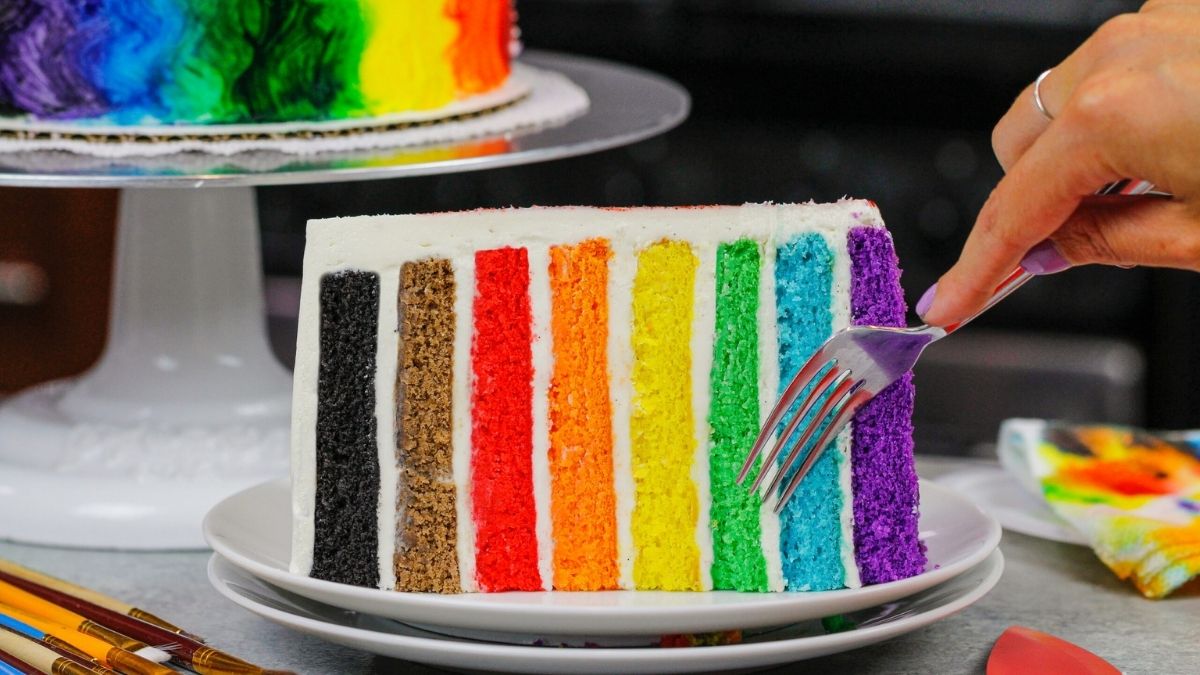An interesting new trend that is going viral globally amongst new parents expecting their new babies into the world is the gender reveal party. How do gender reveal parties work? Instead of notifying the new parents of the sex of the baby still in the womb, the doctor notifies a family member who then informs a baker. The baker then bakes a cake, which is either coloured blue (for boys, obviously) or pink (for girls, of course) on the inside with a neutral colour icing on the outside. Thus, surrounded by all their loved ones, the new parents-to-be will cut into the cake to reveal the colour of the cake on the inside and, consequently, the “gender” of the child. Neatly packaged in a absolute dimorphic and cisgendered box of either a boy or a girl.
This trend is based on the still commonly held simplified belief that gender equals biological sex and that being born with a vagina means that you are a girl and that having a penis indicates that you are a boy. Even if one does embrace purely biological grounds for a gendered child, this ignores the fact that about 1.7% of the population can be classified as intersex, meaning that they have biological characteristics that are both male and female or that could alter whether their biologically assigned sex at birth matures into a cisgendered adult, that is, someone whose biological sex and their gender identity matches. While 1.7% might seem like a very low percentage, it’s about the same prevalence as redheads that we find in the general population. And we certainly do not try and box redheads into a either a blonde or a brunette category. Just like redheads are an accepted possible genetic variation of haircolour, so intersexed people should be an accepted genetic variation of sex, being biologically neither male nor female. We do not ostracized nor deny the existence of our redheaded friends or family. Yet too many intersexed children have been forced to conform to black and white boxes of male or female, despite their biology falling somewhere in the grey continuum in between. And they are similarly assigned a black and white gender identity that does not relate to their lived experiences.
This point brings us to gender identity compared to biological sex. While biological sex refers to your sexual parts, gender identity refers to how we perceive ourselves and is socially construct. There are a number of indicators of biological sex, including sex chromosomes, gonads, internal reproductive organs, external genitalia and hormones while gender identity refers to the attitudes, feelings, and accepted behaviours that are societally associates with a person’s biological sex, although generally have nothing to do with your sexual parts. For example, in our societal context we are raised that men are the head of the household and dominant, while women are submissive homemakers. Similarly, boys play rugby, girls play netball or men braai and a woman’s place is in the kitchen. Yet, we all know that these are not hard and fast rules, they are fluid. Yes, our gender identity can conform to our biological sex and this is what is referred to as a cisgender identity. However, our biological sex and our gender identity are not necessarily one and the same and someone who was born biologically female can feel more comfortable in their self-expression and identity as a male, or vice versa, which is the case we find in transgender individuals. This also has nothing to do with sexual orientation and a transgendered person can still be sexually straight or gay (or everything in between the continuum).
Until very recently, it was common practice when an intersex baby was born to have the parents decide which gender they would raise the child in and, often, surgery was performed to make the biological sex match the parentally assigned gender of the child. Thankfully, this practice has mostly been relegated to the history books. The reason? It is almost impossible to know which gender an intersex baby will identify with as an older child or as an adult. Too many intersex babies that were surgically converted into a clear-cut boy or girl grew up to rather display characteristics of the opposite sex with majorly detrimental consequences for their self-concepts and, consequently, mental health. The most common practice now is to leave the option of surgery in the hands of the child when they are old enough to choose themselves what they prefer to identity as and embrace. And many choose to forego surgery altogether and simply live life the way that they were created, as neither male nor female, but simply themselves.
While many intersex adults prefer to list their gender identity as fluid, just like their biological make-up, they absolutely also can prefer to identity either as male or female, just like they can also have a sexual orientation that is hetero-, homo-, bi-, pan-, demi- or asexual (or anything else, really). The emphasis here is that our gender identity is how we see ourselves, regardless of our biological sex or our sexual orientation and that nothing is as black and white as it seems. Yes, this can be complicated for some members of our society who prefer the simplicity of black and white boxes, but it is not society who has the suffer the consequences of being boxed into a category you do not identify with. It really has nothing to do with any of us, beyond the sex and gender non-comforming person and, maybe, their families. So, to get back to the gender reveal party and the pink versus blue cake, what stands new expecting parents to do? What do parents of intersex babies do? As contentious as the topic is of multiple different gendered pronouns and the consequential overwhelming fears of having to learn and understand countless new ways of addressing your child, a more positive trend than coloured cakes popping up all over social media is the simple use of the genderless plural form of the pronoun: they, them, their[s]. This does require us to open our minds to a new way of relating to and communicate gender. But embracing a slightly more open-minded view does not hurt us or anyone else. However, unfortunately, the opposite isn’t true. Continuing to profess a dualistic dimorphic view, despite it being contrary to nature, does immense harm to the individuals whose very existence and identity are denied by it with gender non-conforming individuals being at a much higher risk for bullying, isolation and, consequently mental illness and, often suicide.
Realising full and well that fear brings out the worst in all of us and that this topic makes society at large fearful that the gendered world as we know it is coming to an end that somehow someone will force us all to into a fluid, genderless society. But this blog isn’t calling for an overthrow of society at large or making everyone conform to a new law and order. Because how is that any different from the status quo forcing all babies into categories of pink or blue? Rather, this is a call for an acknowledgement and allowance of all the colours of the rainbow and allowing individuals and families to choose their own colour. Simply noticing whenever someone introduces themselves or their children using the neutral plural pronouns rather than gendered pronouns of he/she, him/her or his/her[s] and responding as such doesn’t change our world in the slightest, but it can mean the world to them. A world that is slightly more inclusive and accepting of all the expressions of biology and identity under the sun.






